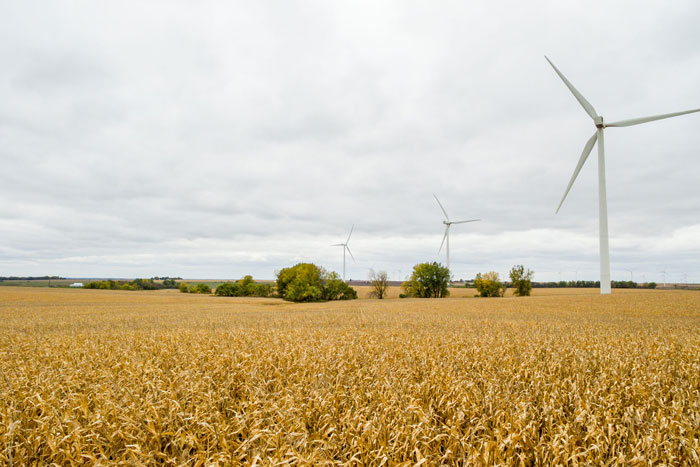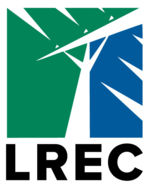 A major provider of wholesale electricity to Lake Region Electric Cooperative, Great River Energy (GRE), recently announced plans to phase out the use of coal in coming years. The power portfolio changes are expected to reduce power supply costs to its 28 member electric distribution cooperatives that own GRE. “We are building a power supply portfolio that will serve our member-owner cooperatives for decades,” said Dave Saggau, GRE’s President and Chief Executive Officer. “We are taking advantage of cost-competitive renewables and reliable access to market energy while fostering innovation as the technology of our industry evolves.” GRE is one of the largest generation and transmission (G&T) cooperatives in the nation.
A major provider of wholesale electricity to Lake Region Electric Cooperative, Great River Energy (GRE), recently announced plans to phase out the use of coal in coming years. The power portfolio changes are expected to reduce power supply costs to its 28 member electric distribution cooperatives that own GRE. “We are building a power supply portfolio that will serve our member-owner cooperatives for decades,” said Dave Saggau, GRE’s President and Chief Executive Officer. “We are taking advantage of cost-competitive renewables and reliable access to market energy while fostering innovation as the technology of our industry evolves.” GRE is one of the largest generation and transmission (G&T) cooperatives in the nation.
By the end of 2023, the energy produced by GRE will be more than 95% carbon dioxide free, essentially eliminating its carbon footprint. This is a continuation of a path that GRE has been on for the past few years.
GRE’s overall goals are three-fold: 1. Keeping electric power reliable. 2. Providing energy that is affordable. 3. Continuing to reduce carbon dioxide emissions “Like all of Great River Energy’s decisions, these changes are made in the best interests of our member-owner cooperatives,” added Saggau.
 Switching to Natural Gas and Wind: Retirement of the 1,151- megawatt (MW) Coal Creek Station is slated for the second half of 2022. By the close of 2023, GRE expects to add 1,100 MW in purchases of wind energy. Wind resources in the Midwest offer some of the highest availability anywhere in the country.
Switching to Natural Gas and Wind: Retirement of the 1,151- megawatt (MW) Coal Creek Station is slated for the second half of 2022. By the close of 2023, GRE expects to add 1,100 MW in purchases of wind energy. Wind resources in the Midwest offer some of the highest availability anywhere in the country.
The plans also include modifying the 99 MW coal and natural gas fueled Spiritwood Station power plant to be fueled solely by natural gas. GRE already operates a large portfolio of natural gas peaking plants to provide year-round reliability.
As GRE makes these significant shifts, it plans to add energy and capacity as needed through upgrades to its fleet of modern, natural gas peaking plants and purchases from the Midcontinent Independent System Operator (MISO) energy market. MISO is one of the world’s largest energy market pools, stretching from the Midwest US and Manitoba, Canada, to a southern US region that includes Arkansas, Mississippi, and Louisiana.
But, what happens if the wind doesn’t blow? With the planned shift in GRE’s energy portfolio, you may be wondering if enough energy will be available. To answer that question, let me offer this analogy. Think about a huge lake, one fed by many inlets and drained by many outlets. The inlets and outlets are all of the electric utilities operating within the expansive MISO region. The water held in the lake is equal to the electricity of the MISO energy pool. Constant inflow and outflow are managed by MISO to keep the “lake level” stable.
Along with the other utilities located across the MISO area, GRE’s capacity resources are inlets from which power flows into the MISO pool. The retail loads of utilities are outlets, drawing electricity from MISO. Utilities like GRE still must plan through MISO to have enough capacity for their own retail loads. But every day, MISO coordinates all of the electricity that moves into and out of the power pool, ensuring there is enough to meet everyone’s needs.
For the summer of 2020, the MISO capacity is 152 gigawatts (GW) within the energy pool. The MISO summer forecast for electric demand in 2020 is expected to reach 125 GW, leaving a substantial cushion in capacity. The MISO system includes numerous natural gas powered “peaking” plants that can be brought online quickly should demand for electricity spike. Most of GRE’s natural gas peaking plants are dual fuel capable, which enables them to provide all-hours reliability year-round.
What will be the impact on Lake Region? I expect our forecasted wholesale power costs for 2023 will be reduced slightly as the GRE plans are implemented.
 In serving our local members, Lake Region values the same goals as stated by GRE — the clean generation of electricity that is reliable and affordable. GRE and MISO are working together to achieve these goals. Lake Region’s own hybrid solar & wind generation project has been very successful, and while we will continue studying the potential for adding similar projects, we have no such plans at this time. Additionally, under current rules and laws, our operating hybrid project is the largest allowed. The future of the electric utility industry in the Upper Midwest will be a reliance on natural gas and renewable sources, and a greatly reduced dependence on coal-fired power plants.
In serving our local members, Lake Region values the same goals as stated by GRE — the clean generation of electricity that is reliable and affordable. GRE and MISO are working together to achieve these goals. Lake Region’s own hybrid solar & wind generation project has been very successful, and while we will continue studying the potential for adding similar projects, we have no such plans at this time. Additionally, under current rules and laws, our operating hybrid project is the largest allowed. The future of the electric utility industry in the Upper Midwest will be a reliance on natural gas and renewable sources, and a greatly reduced dependence on coal-fired power plants.

 Lake Region Electric Cooperative
Lake Region Electric Cooperative